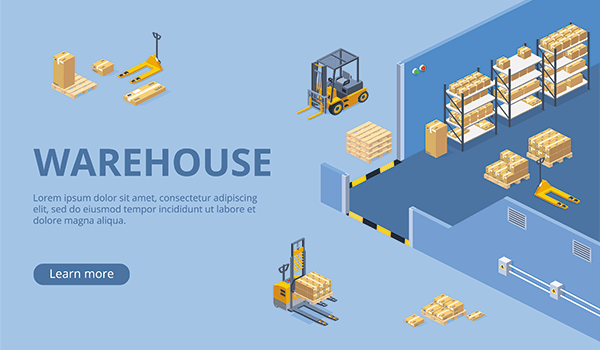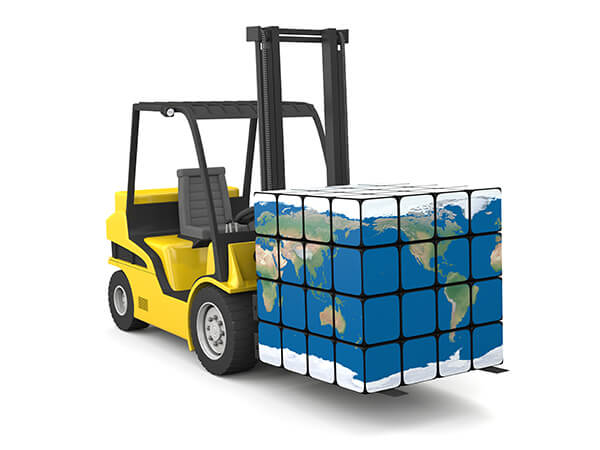
Today we discuss the possible trends of chinese Forklift Industry in the next ten years.
Trend 1: The Forklift Industry is still Booming

The more subdivided the social division of labor is, the higher the cost and the more prosperous the forklift industry is. These are facts.
First of all, the social division of labor, also known as the global division of labor, is the basis of international trade.
Only the backward, small peasant economies do not need to trade and are self-produced.
For example, we eat cherries from Chile, lobster from Australia, avocado from Mexico, whisky from England, a red wine from France, and iPhone from Foxconn. In the future society, the division of labor will become better.
The more distributed the division of labor is, the more links in the intermediate turnover logistics.
There will also be an increase in the need for logistics handling. Secondly, with the development of society, the cost of labor will also increase.
But with technological innovation, the cost of various equipment will become lower like Moore’s Law, so the effect of forklift labor replacement will become more apparent.
In other words, where labor is more expensive, forklifts use is more; where labor is cheaper, forklifts use is lesser.
But with technological innovation, the cost of various equipment will become lower like Moore’s Law, so the effect of forklift labor replacement will become more apparent.
In other words, where labor is more expensive, forklifts use is more; where labor is cheaper, forklifts use is lesser.
Trend 2: Digital Informatization

In the future, the innovation and entrepreneurship of all manufacturing enterprises are inseparable from robots, automation, the Internet of things, AIl artificial intelligence, and cloud computing.
These underlying logics are all digital and information. Companies that have been deeply digital in the past decade have done well. The others who reject the Internet and digitization are on the brink of inexistence.
In the next ten years, digitalization will be the trend. Companies that will take the lead will enjoy the dividends brought by these technologies. Ten years ago, some companies had websites while other companies didn’t. Some restaurants did not have takeout, and others didn’t have an online presence.
Now every company has its website, and every restaurant offers takeout. Only by actively embracing the Internet and walking ahead of other companies can we enjoy the dividends of informatization.
Traditional companies cannot achieve deep intelligence and digitization with limited Information technology centers. They should spread information-savvy employees across departments. For example, a dedicated computer room was set up in a traditional enterprise decades ago, and various machines in the company are limited to centralized management.
But now everyone has a computer, and even every department has a printer. The IT department of a traditional enterprise is like a computer room at the time, putting all the computers together. Distributing IT personnel to various departments will fully digitize all business links (marketing, production, R&D, finance, supply chain, and even decision-making).
Big data itself is an asset that improving the efficiency of each department through micro-innovation (each department has some repetitive and light work done in computer or machine) can do wonders in your digitalization strategy. The IT department is responsible for coordinating the informatization of the whole company, and opening up the data of each link will make it more efficient.
In the future, the production enterprises in the forklift industry will use high-tech factories. They will replace obsolete machines, and the finance will take advantage of material management software such as SAP\ERP\WMS\PLM.
The research and development design will tap into virtual simulation and AI algorithm methods.
Presently, china domestic Internet software companies are already in the top echelon of the world. Last year, the Internet anti-monopoly and layoffs in large factories caused many Internet IT talents to flow to the traditional manufacturing industry, empowering the manufacturing industry and accelerating the data informatization of the manufacturing industry.
Trend 3: Globalization

From the perspective of enterprise development experience, both Carter and Komatsu have experienced growth from a local leader to an international leader. Currently, Caterpillar (50% of total revenue from overseas) and Komatsu (70% of revenue from overseas). Caterpillar started globalization with the Marshall Plan after World War II. Komatsu has reached the ceiling in the Japanese domestic market, and the only growth factor can only come from globalization.
The appreciation of the yen after the “Plaza Accord” in 1985 made Komatsu’s price advantage disappear but was beneficial to Komatsu’s several mergers and acquisitions in Europe, and it also accelerated his globalization.
Referring to the impact of the Marshall Plan on Carter and the impact of the Plaza Accord on Komatsu. At present, the national RCEP agreement and the “One Belt, One Road” policy are favorable for construction machinery to go overseas.
Under current epidemic, China has a more stable domestic production environment, a complete supply chain, and better engineer bonus. Such an international environment is more likely to take advantage of the momentum to gradually open up the global market. At present, construction machinery is replicating the trajectory of home appliance companies (such as Midea Haier) growing from a domestic home appliance leader to a global home appliance leader a few years ago.
Currently, the global forklift market size is about 151.1 billion: the domestic market is 44.7 billion, the overseas market exceeds 100 billion. According to the current overseas revenue data of major domestic manufacturers, china is only in the initial stage of globalization.
A simple computation shows that every 1% increase in overseas market share will increase revenue to about usd200 million. The overall domestic market predicts that in the next 5 years, there will be an annual growth of less than usd150 million.
The china domestic forklift market has formed a duopoly pattern. And in the future, the domestic market will encounter a ceiling. Only positive globalization can bring about change. The globalization path (from sales globalization to production globalization) of domestic construction machinery companies such as Sany and XCMG have already attested this.
On the other hand, the share of foreign forklift brands in china domestic market is less than 10%, indicating that chinese forklift are more popular than foreign brands. In the future, the leading companies in china domestic forklift industry will open overseas branches one after another. If they can occupy the overseas market share, they will enjoy the dividends brought by globalization.
While bringing high-performance growth space, it also helps to resist single market risks. There will be a need for more foreign language interdisciplinary engineers who play a role in the globalization of enterprises.
Trend 4: Chinese forklift Post-market

From selling products to resale service.
From the perspective of the global giants construction machinery, whether it is Carter, Komatsu, or Toyota, the aftermarket revenue share is very high, but so far china’s current forklift market share is very small. So there is a lot of potential in this regard.
In the future, people who understand the products, the market, and have a sense of service will succeed. In the aftermarket, there is less competition than selling forklifts, and there is a lot of room for development, and these activities can be cost-effective.
Trend 5: Technological Breakthrough - New Energy

The rise of global construction machinery giants like Caterpillar and Komatsu was made possiblly by technological breakthroughs.
For example, diesel engine technology has established Caterpillar’s leading position, while hydraulic technology enables Komatsu to achieve cornering overtaking.
Today, the new energy electric vehicle technology is gradually go mature. In other words, it is an opportunity for chinese forklift industry to overtake on the curve.
Presently, there are few professional and technical personnel engaged in new energy vehicles in the forklift industry. Most of them are halfway monks.The after-sales service, certification, and research and development of new energy forklifts and chargers are led by suppliers. In near future chinese forklift manufacturers will look into talents specializing in lithium batteries involving research and development, after-sales service, and information resource group (standards, certification, manuals, etc.).
Because the future market is not only about launching new energy forklift products, but others such as charging solutions and after-sales services can improve the quality and experience of new energy forklifts in an all-round way. The relevant supporting industries will also benefit and will also introduce such talents.
Above are humble understanding on chinese forklift industry development trends. Welcome to contact us for further discussion. 